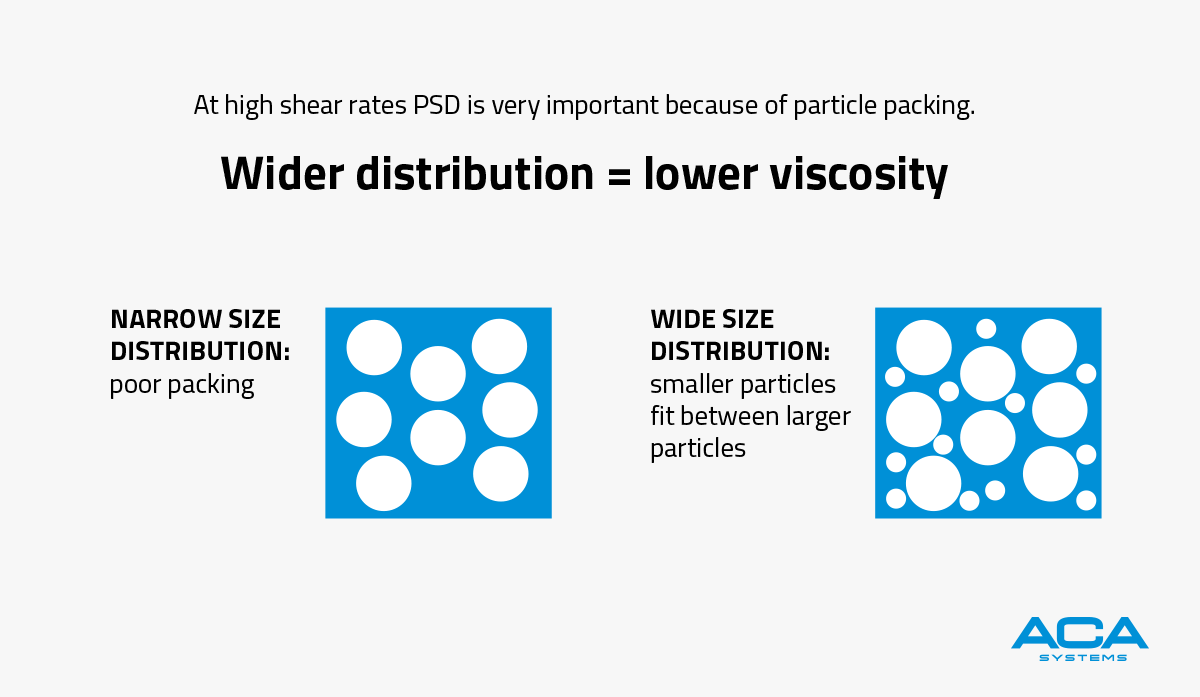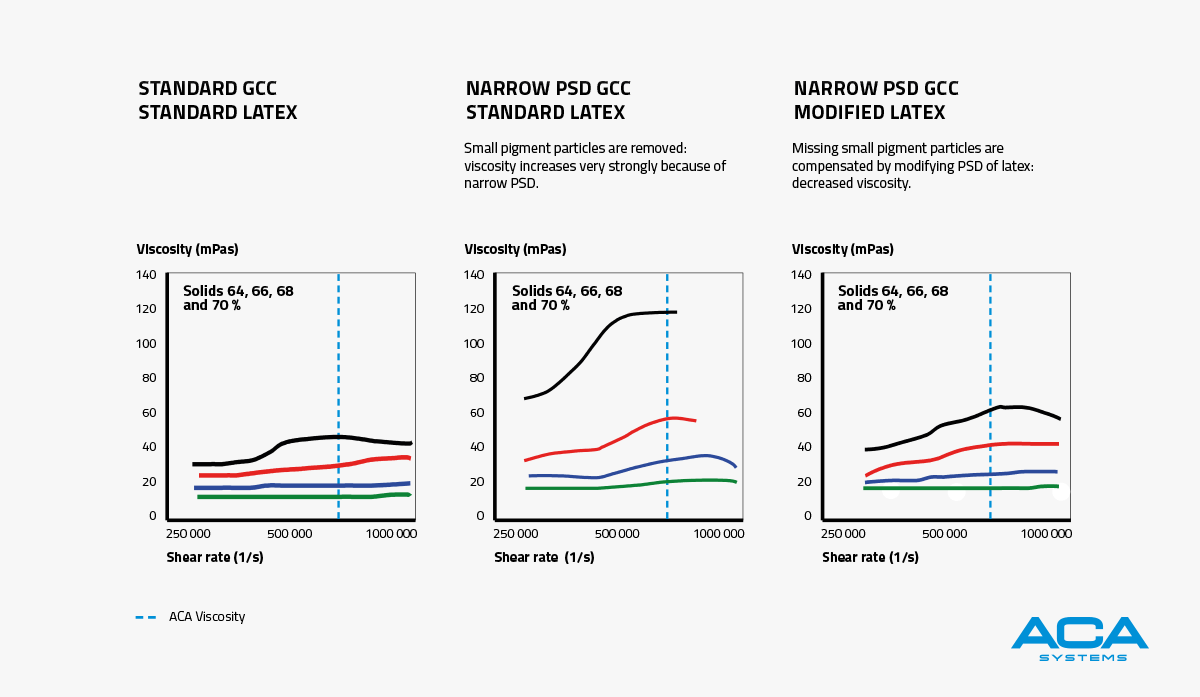ACA Technical Blog: Cost savings via viscosity management in paper and board coating
Understanding rheology and measuring viscosity with proper instruments can lead to significant cost savings and quality enhancements in paper and board coating. This technical blog describes the case in details. Please feel free to contact our experts for further information and case studies info@aca.fi
Rheology and viscosity in paper and coating
Coating colors for paper and board are complex viscoelastic materials and therefore their flow properties ie. rheology is complicated. The most important rheological factor is the viscosity, which indicates the resistance to flow. Viscosity value and its form is strongly dependent on shear rate. At low shear rates the viscosity is structural due to surface chemistry that can cause flocculation and other structures between particles and coating components. At high shear rate the structures are broken and the viscosity is non-structural, mainly caused by hydrodynamic factors including particle shape, size and size distribution. The non-structural viscosity starts to dominate roughly at shear rates above 200 000 – 400 000 1/s, as seen in Figure 1. To be 100 % that the viscosity behavior is pure non-structural, it is necessary to reach shear rates above 500 000 1/s during viscosity measurement.
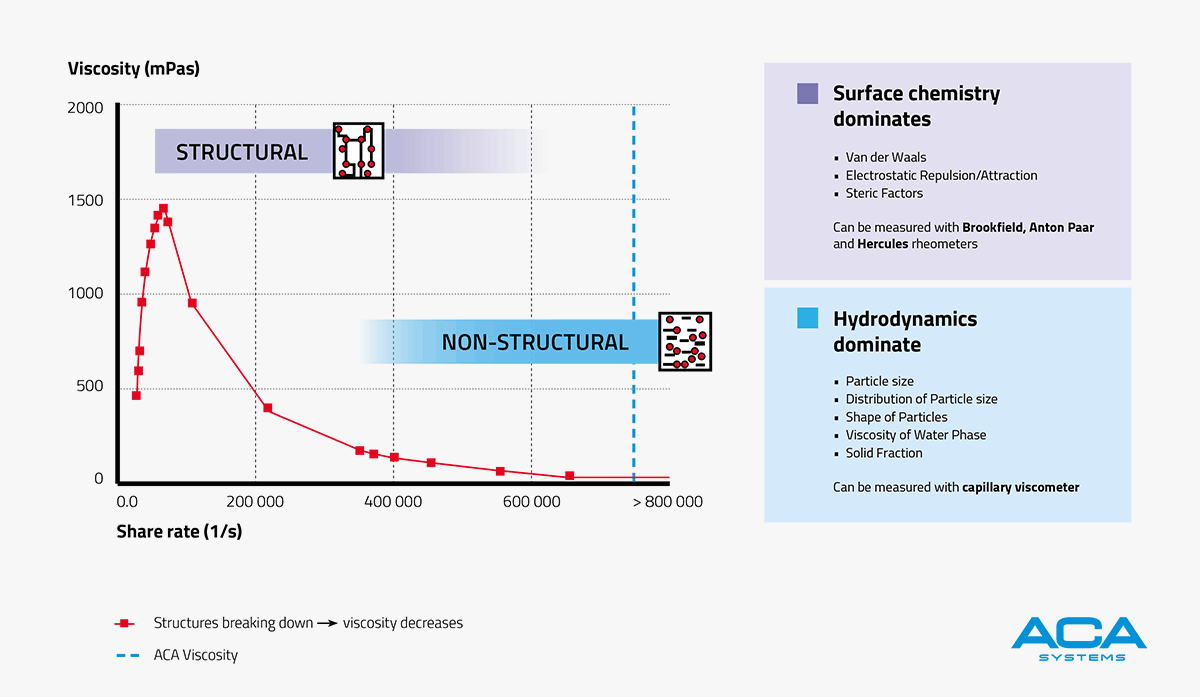
New capillary viscometer for high shear rates
ACA Systems Oy has developed a new capillary viscometer ACA AX-100 and proposed a new TAPPI standard method to describe the non-structural viscosity at 750 000 1/s. The standard is valid for coating colors solids content from 30 % to 80 %. Outside standard method it is possible to measure also high shear viscosities of low solids dispersions such as starch solutions, size press formulations, pigment and latex slurries etc.
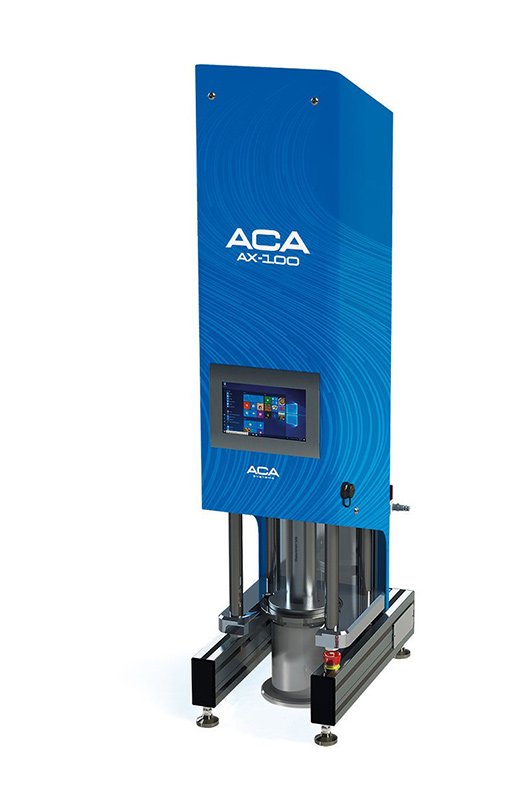
Customers can now predict rheological problems…
The ACA Viscosity is easy and fast tool to evaluate coating rheology and its influence on coater runnability. Shear rates in application and metering stages can vary from 100 000 1/s to several millions, so traditional rotation meters such as Brookfield, Anton Paar and Hercules cannot be used to predict runnability of the coater.
However, it has been shown that the ACA viscosity has very high correlation for example with blade lines / streaks.
Following example is from a leading coated board producer. New coating recipe was developed and ran in a machine trial, but during the trial the runnability got poor and the trial had to be stopped mainly because of blade streak / lines. The laboratory analysis showed 30 – 40 % higher ACA viscosity compared to standard recipe. Brookfield viscosity was adjusted to same level for both recipes. For the future trials the customer decided to approve every new component first with AX-100 and avoid machine problems in advance.
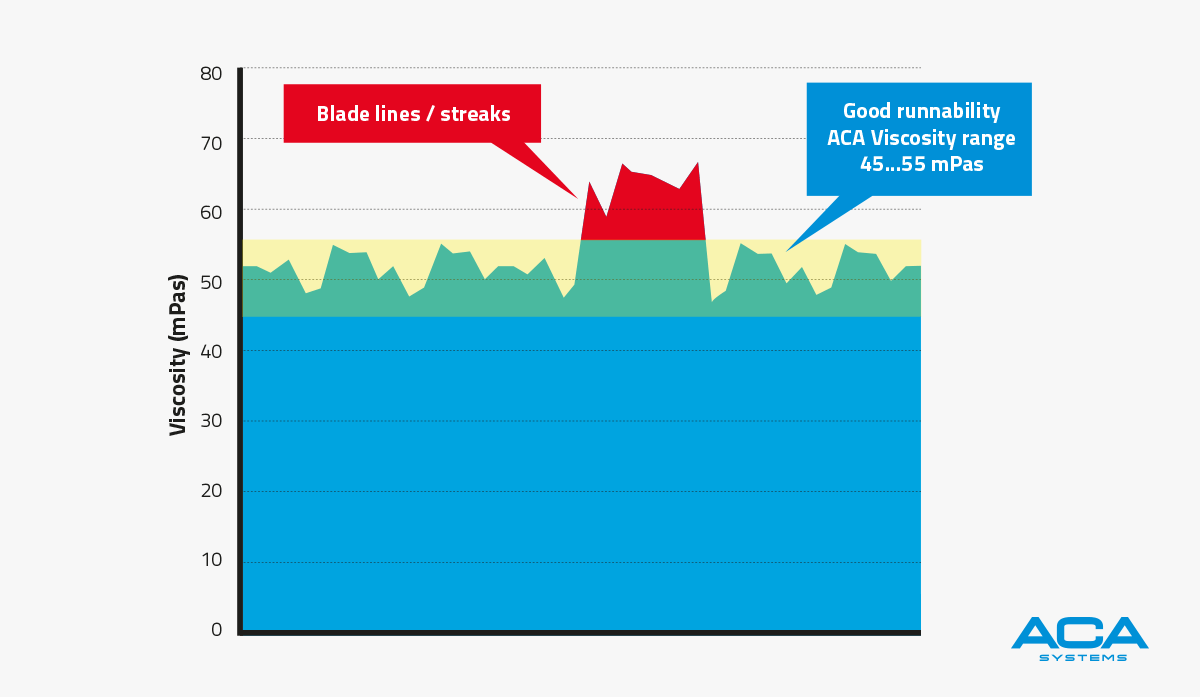
… And optimize coating recipes
Pigment or latex particle size and size distributions have a great influence on hydrodynamic viscosity. The optimization of the total particle size distribution providing low ACA viscosity is the key to achieve cost and quality benefits.
